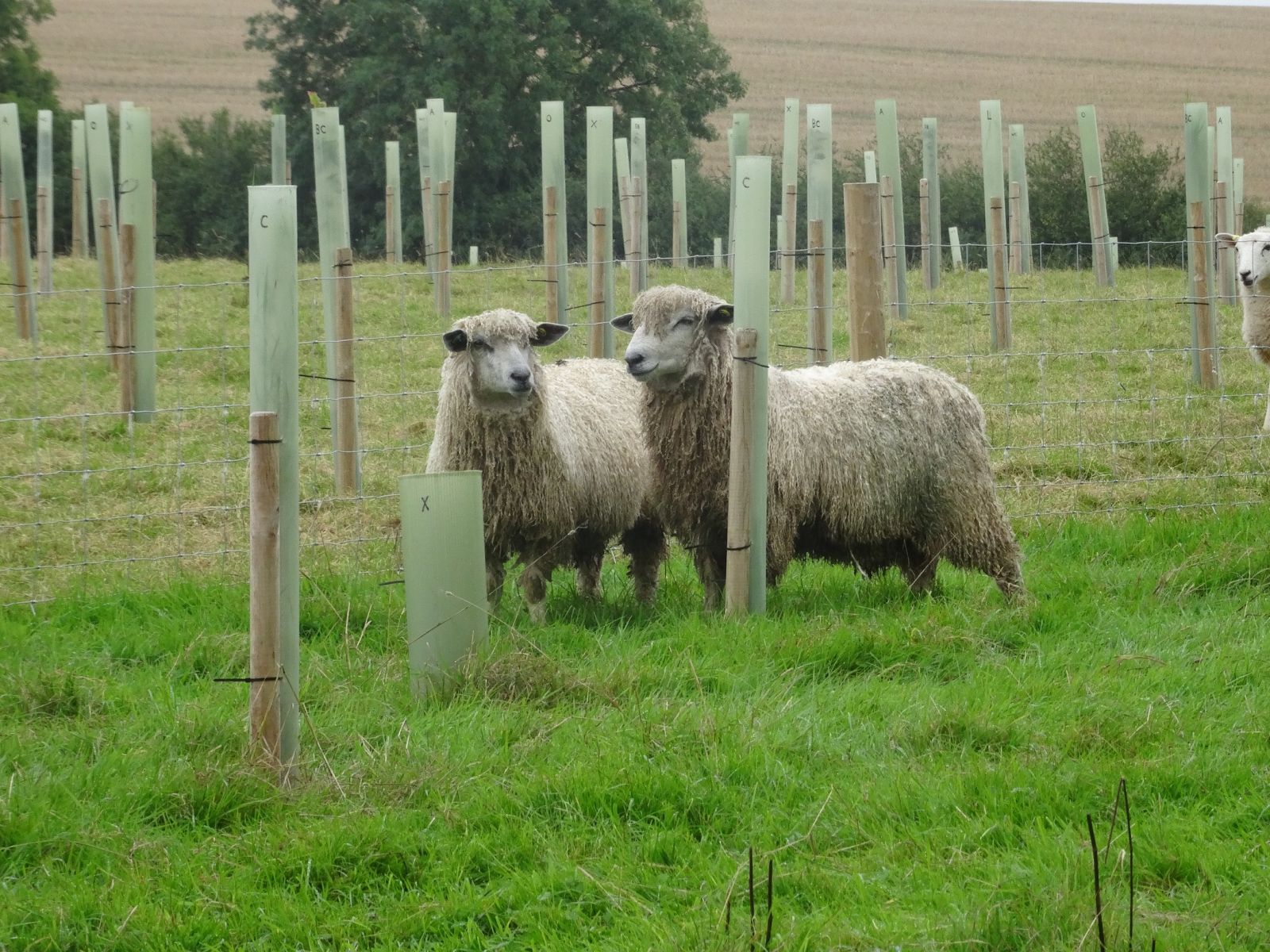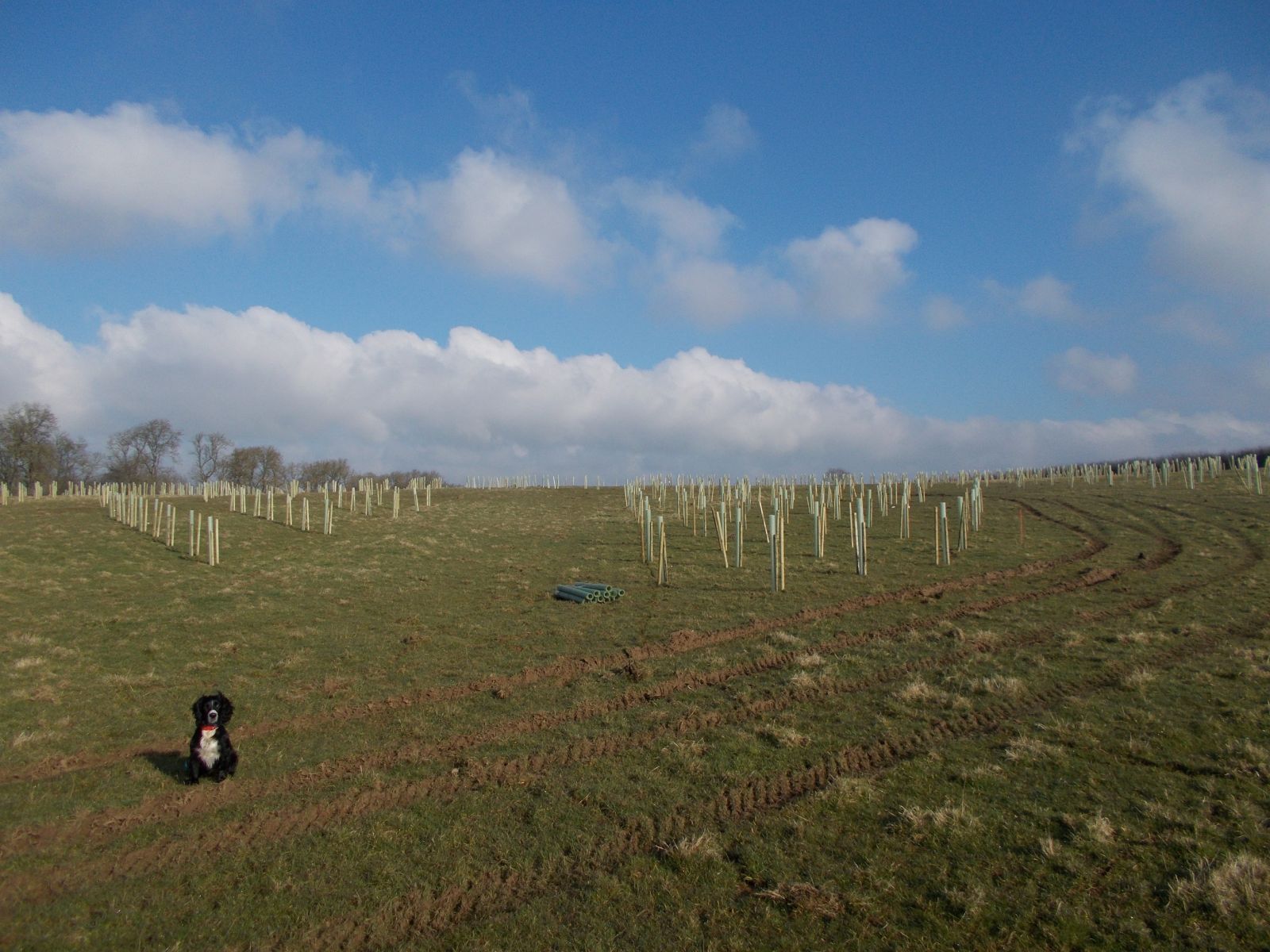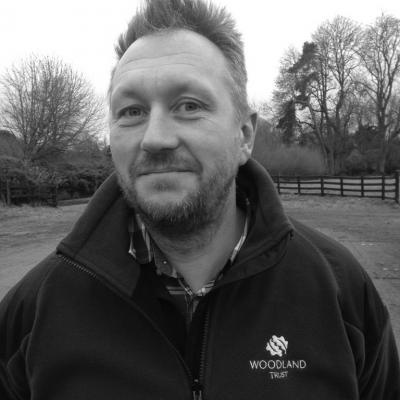Agroforestry - it's just trees on farms!
24 February 2017
 ©Agroforestry Trials, Allerton
©Agroforestry Trials, AllertonSpeaking to a good friend of mine recently about agroforestry, and trying to explain what I actually meant by it, I ended up flippantly saying “well it’s really just trees on farms!” Then I thought well that is it really; trees providing benefits on a farm. Now I see pretty much all trees as beneficial on a farm, so in many ways my definition of agroforestry could indeed be defined by “it’s just trees on farms.”
Challenges and benefits for farmers…
For a great many years I have been frustrated at the inability of government grant schemes to be flexible. The Basic Payment Scheme (BPS) and the Forestry Commission’s grants have always clearly defined agriculture as being land with less than 100 trees per hectare and woodland as being anything over this - ok? So far so good… But the Forestry Commission won’t pay for a grant until you have at least 1,100 trees per hectare, and then you can’t use the land for agriculture without losing BPS money. Surely... ahhhh there must be a way to plant trees on a farm and still retain the ability to farm the land? Until a few hundred years ago, wasn’t this pretty common practice? Pannage (the right of feeding animals in woodland) was common place.
All farmers have at some stage thought about the trees on their farms and in a good many cases it may be about considering how they can reduce the number and get rid of some of those pesky trees which interfere with agricultural operations...! I once met a farmer who utterly hated trees and boasted he only had one oak tree on his farm. I saw him a few years later and he proudly said he’d taken that out. For many of us however trees are an important part of farming and the landscape we live in... They provide food and shelter for wildlife and are aesthetically pleasing. They help shelter our livestock from the worst of weathers and the hottest of days and, after all that, they heat our homes. But is there still more to trees and the uses they have on a farm? Together with alot of friendly farmers and landowners, I’ve been looking at how agroforestry can help to achieve more benefits through integrating different farming techniques, tree species and densities.
Agroforestry is quite often seen as alley cropping; where trees planted at workable intervals (often 24m apart in strips 3m wide) are grown inbetween arable crops. This is a great use of land as it only takes out a very small amount of productive area and the crop produced from the trees should easily make up for the loss of arable production. So why don’t farmers do more of this I hear you ask? Well of course there are downsides… You need to make sure you have an end market and it can, let’s say in the case of fruit production, be quite labour intensive. Other issues arise from shade and shelter of the crops, but these are generally thought to be counteracted by benefits such as the addition of leaf litter in surrounding fields and tree roots generally helping with water infiltration and reducing waterlogging in the fields. You’re also creating a haven for arable-friendly insects and beetles in the rough grass at the base of a tree…
The Allerton Project trial
So it was with a great deal of joy a couple of years ago that I noticed that the wording in the BPS booklet changed; it suggested that as long as agricultural activity takes place beneath the canopy of a newly planted woodland, then this still means the land is grassland and hence agricultural, and hence, farmers can still claim BPS. This led to a conversation with the Game & Wildlife Conservation Trust (GWCT) Allerton Project - along the lines of can you plant trees in fields at higher densities than 100 per hectare and not only retain your BPS but also graze and utilise the land to be productive for grazing, shelter, wood fuel, wildlife and pheasant shooting, whilst also just being a nice place to be? And the answer? Well, maybe? Unfortunately the trees won’t grow quickly enough so we may have to wait a few years to find out, but that’s the project we are working on with the Allerton Project on the GWCT’s demonstration farm in Loddington, Leicestershire.

(Leicester Longwools amongst the young trees. Photo credit: Rachel Lewis)
The project goes further though and looks at what density the viability of grazing starts to drop and also takes into account the benefits of shade and shelter on live weight gain of sheep in this sort of woodland pasture environment. The project soon took off; we decided to plant 14 different sites across a 5 hectare field just behind the farm buildings and in a good situation for pheasants to roost but also with good access for sheep (and researchers!). The densities were spread across the field but consisted of 2 blocks each of 100, 200, 400, 600, 800, 1,100 and 1,600 trees per hectare to give a good range. Trees were almost all native British hardwoods and were planted in 1.2m tubes with 2 x 50mm 1.5m stakes to support the tubes from the inevitable rubbing by sheep. The rows were all in sinuous curves to allow the woodland to blend in with the contours of the land and give a natural look to the planting.
(Large 10m rides cut through the different densities of the planting - pictured with 'Izzy' the dog. Photo credit: Stuart Holm)
In order to allow a degree of wildlife to inhabit the woodland, we also included 4 areas of shrubs (about 0.5 hectares in total), in 4 different blocks around the field which will in time have no grazing in order to allow ground flora to generate. This will mean that these 4 areas will have to be declared as ‘woodland’ and be removed from the BPS claim but will in turn benefit the pheasants and wildlife. The management of this woodland going forwards will of course have implications on the density and the ground flora, and we hope to be able to monitor how the soil structure and water infiltration changes over time within a woodland/wood pasture system, alongside answering a great many other questions which keep coming up.
I am looking forward to finding out more about the results and also to creating more and more diverse (and possibly more challenging!) agroforestry projects in the future, so if you have any ideas, please do get in touch.
Stuart Holm has worked with the Woodland Trust for the past 6 years encouraging farmers and landowners to plant and create woodland landscapes. Before this he was the Leicestershire and Rutland FWAG Adviser for 12 years, giving conservation and business advice to farmers. He runs a small arable farm of his own in Leicestershire and has recently installed silt capture ponds and leaky dams to help reduce peak flow and run off from his farm. He also has over 50 acres of mature woodland on the farm which he manages himself. He has been involved with several large scale agroforestry schemes and is keen to look at more innovative ways of managing our farming landscape.
You can contact Stuart at StuartHolm@woodlandtrust.org.uk
Editor's note:
- View the Woodland Trust case study on the Allerton Project trial here.
- In this video footage, filmed in November 2016, Stuart talks about some of the practicalities of the planting scheme, the different tree species used (describing reasons behind planting choices), the need to provide cover for pheasants, and the possibility of integrating livestock such as cattle and pigs and potential benefits from doing so such as self-medicating through browsing.
- Interested to learn more and hear from other farmers? Book your place here on the Agroforestry 2017 conference: improving productivity for farmers and foresters.
Agricology features many other examples of inspiring ways in which trees can be integrated into farming practices. Explore some of them here:


